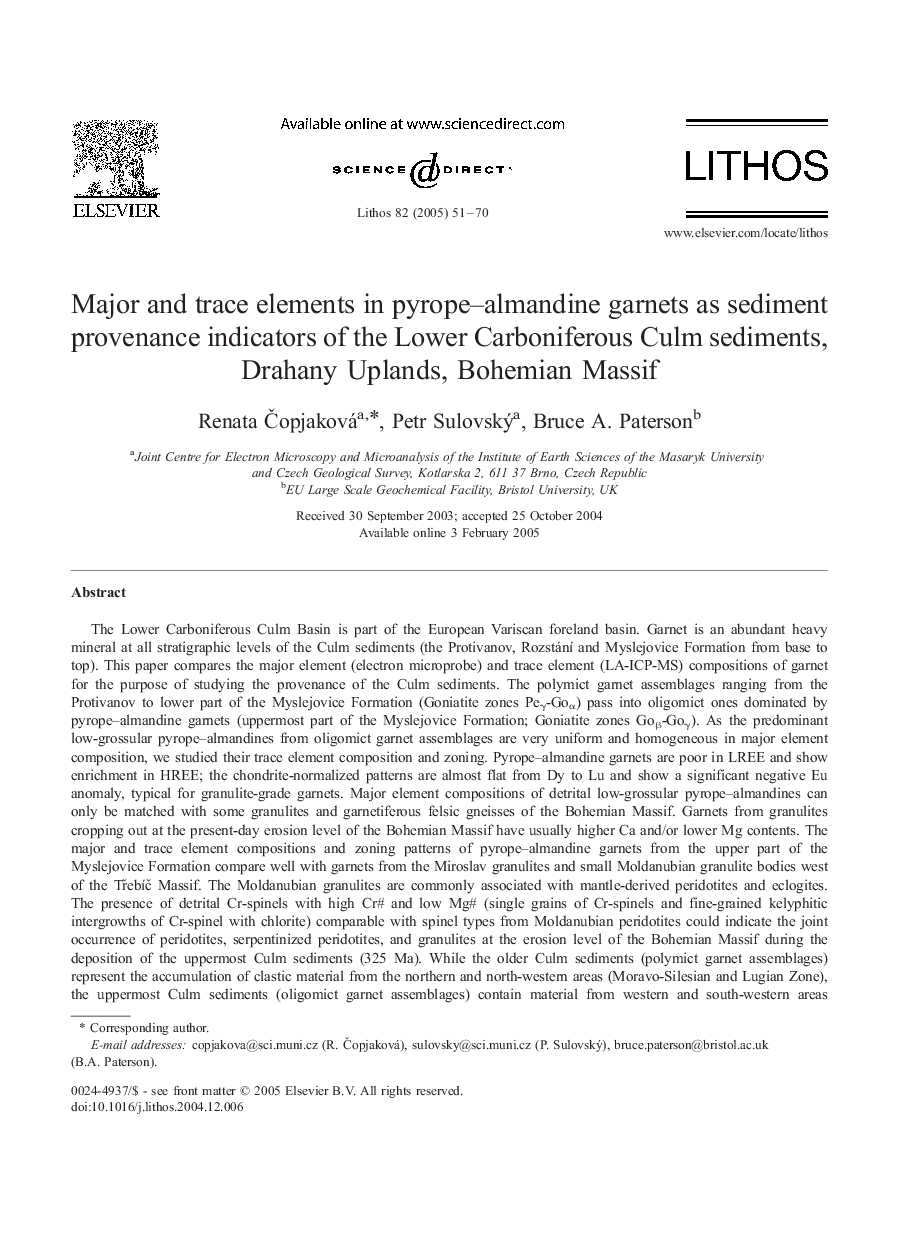| Article ID | Journal | Published Year | Pages | File Type |
|---|---|---|---|---|
| 9532027 | Lithos | 2005 | 20 Pages |
Abstract
The Lower Carboniferous Culm Basin is part of the European Variscan foreland basin. Garnet is an abundant heavy mineral at all stratigraphic levels of the Culm sediments (the Protivanov, Rozstánà and Myslejovice Formation from base to top). This paper compares the major element (electron microprobe) and trace element (LA-ICP-MS) compositions of garnet for the purpose of studying the provenance of the Culm sediments. The polymict garnet assemblages ranging from the Protivanov to lower part of the Myslejovice Formation (Goniatite zones Peγ-Goα) pass into oligomict ones dominated by pyrope-almandine garnets (uppermost part of the Myslejovice Formation; Goniatite zones Goβ-Goγ). As the predominant low-grossular pyrope-almandines from oligomict garnet assemblages are very uniform and homogeneous in major element composition, we studied their trace element composition and zoning. Pyrope-almandine garnets are poor in LREE and show enrichment in HREE; the chondrite-normalized patterns are almost flat from Dy to Lu and show a significant negative Eu anomaly, typical for granulite-grade garnets. Major element compositions of detrital low-grossular pyrope-almandines can only be matched with some granulites and garnetiferous felsic gneisses of the Bohemian Massif. Garnets from granulites cropping out at the present-day erosion level of the Bohemian Massif have usually higher Ca and/or lower Mg contents. The major and trace element compositions and zoning patterns of pyrope-almandine garnets from the upper part of the Myslejovice Formation compare well with garnets from the Miroslav granulites and small Moldanubian granulite bodies west of the TÅebÃÄ Massif. The Moldanubian granulites are commonly associated with mantle-derived peridotites and eclogites. The presence of detrital Cr-spinels with high Cr# and low Mg# (single grains of Cr-spinels and fine-grained kelyphitic intergrowths of Cr-spinel with chlorite) comparable with spinel types from Moldanubian peridotites could indicate the joint occurrence of peridotites, serpentinized peridotites, and granulites at the erosion level of the Bohemian Massif during the deposition of the uppermost Culm sediments (325 Ma). While the older Culm sediments (polymict garnet assemblages) represent the accumulation of clastic material from the northern and north-western areas (Moravo-Silesian and Lugian Zone), the uppermost Culm sediments (oligomict garnet assemblages) contain material from western and south-western areas (Moldanubian Zone and Moravian Nappe); the general influx of clastic material changed as a result of clockwise rotation of the eastern part of the Variscan belt during this time span (340-325 Ma).
Related Topics
Physical Sciences and Engineering
Earth and Planetary Sciences
Geochemistry and Petrology
Authors
Renata Äopjaková, Petr Sulovský, Bruce A. Paterson,
